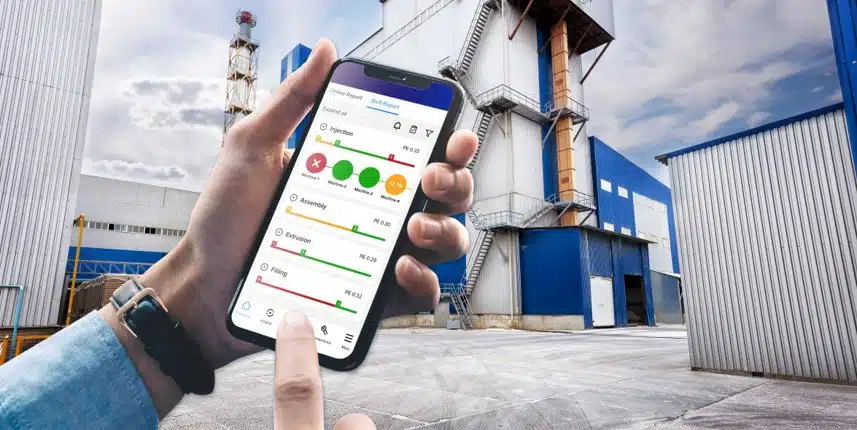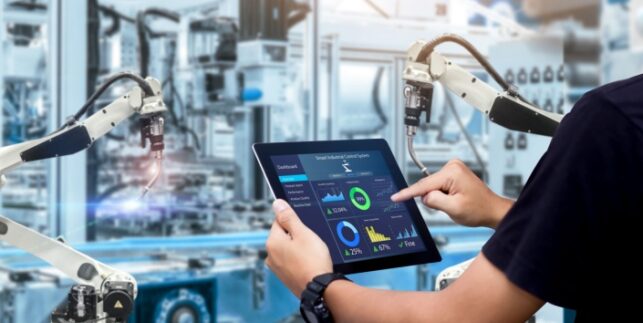Changing the Way Your Organization Handles Energy Management in Manufacturing

Energy prices are on the rise around the world with little sign of slowing any time soon. This puts a significant burden on energy-intensive operations throughout the industrial sector, particularly manufacturing. Increased energy costs impact profitability for manufacturing processes, and manufacturers are turning to improved energy management to offset that impact.
The Benefits of Improved Energy Management
The greatest benefit of improved energy management is the reduction of overall costs through reduced energy consumption. Manufacturers can implement measures to mitigate energy waste or optimize processes to achieve lower overall consumption.
Energy management can also provide savings in other ways. Electricity and other utilities often implement demand pricing alongside consumption pricing, which means that manufacturers pay more per unit of energy based on their peak consumption rates. Energy management can help manufacturers optimize production scheduling and equipment usage during expensive peaks to reduce costs.
Maintaining compliance with increasing sustainability regulations is another key point where energy management helps manufacturers. Having high-quality, high-resolution data, along with increased controls, helps manufacturers see energy usage in real-time and assists manufacturers with sustainability goals. Robust data collection also helps satisfy reporting requirements for various regulatory agencies.
Taking a Deliberate Approach to Energy Management
One of the most widespread approaches to improving energy management is ISO 50001. This ISO (International Organization for Standardization) standard provides a model for the establishment and operation of an energy management solution focused on conserving resources and improving a manufacturer’s bottom line.
ISO 50001 provides a framework that lets manufacturers take a deliberate approach to improving their energy management. It focuses on developing energy sustainability policies, creating targets and objectives, leveraging data in decision-making, and continuous improvement.
Implementing such a framework can help manufacturers reduce their overall energy consumption. This has a direct impact on costs but can bring additional benefits as well. Like other ISO standards, manufacturers can attain ISO 50001 certification if they meet specific requirements for implementation of the standard. Demonstrating a commitment to energy management can help a manufacturer secure the confidence of its customers and industry partners.
The methodology included in the framework is based on the plan-do-check-act (PDCA) cycle commonly used throughout many ISO management standards and other control and continuous improvement processes.
1. Plan
Proper planning is a vital component of energy management for manufacturers. It is necessary to define the scope and overall goals of the organization’s energy management policy. This stage also includes the development of the internal teams responsible for the energy management policy and ensuring that clear roles are defined. What is key here is that this team and other stakeholders have access to energy consumption data.
Benchmarking current energy consumption is another critical part of the planning step. Understanding current energy consumption (base usage) is vital to develop appropriate goals and targets the manufacturer can work towards in the short and long run.
At the end of the planning step, manufacturers should have well-defined objectives and plan to achieve those objectives. While there is still room to adjust as new information becomes available, starting out with a clear plan of action provides the best outlook for success.
2. Do
Once a plan has been developed, it’s time to implement it on the production floor. Depending on the specific goals and action plan developed by the manufacturer, the steps needed at this stage can vary. The new energy management plan could involve replacing or installing new equipment, changing workflows, or adopting a new smart energy management solution.
Communication and awareness are vital at this stage. For any energy policy to be effective, stakeholders at every level must be on board. Manufacturers must ensure that the goals and action plan are adequately communicated to all relevant stakeholders.
This process could involve additional training for people in various roles. As the shop floor transitions to using new equipment or a new process, manufacturers must ensure that stakeholders are confident in their ability to perform their functions.
3. Check
With the new changes implemented on the shop floor, it is now time to monitor and evaluate their impact. Manufacturers must ensure that they have sufficient data and insight to understand what’s happening on the shop floor and its effect on energy consumption.
Monitoring is necessary to ensure the action plan is realized on the shop floor. Any changes in workflows and processes must be verified by comparing what’s happening on the shop floor with the contents of the energy management policy.
The impact of these changes must also be monitored and analyzed. Carefully evaluating the results of energy management changes is vital to ensure that the energy management policy is progressing toward its goals.
4. Act
Once the energy management policy has been implemented on the shop floor, and production data from the changes become available, manufacturers must analyze and take action on this new information. If progress isn’t being made toward goals, the manufacturer must identify the reason why and take corrective action.
This could entail re-evaluating the original plan, its implementation, or monitoring and evaluation practices. Energy management is a continuous improvement process where gaining new understanding provides opportunities to reduce energy waste and optimize processes even further.
Developing the Foundation Needed for Energy Management
Whether through ISO 50001 or other energy management frameworks, manufacturers need access to the right tools to achieve real results. Energy management is not simply a commitment to reduce consumption but a complex process that relies on a clear and accurate understanding of energy use on the production floor.
Matics Real-time Operational Intelligence (RtOI) provides manufacturers with the foundation they need to improve energy management. The platform aggregates and analyzes all production data, providing real-time insight into energy use on the shop floor along with historical trends.
Manufacturers can evaluate energy consumption based on individual machines, shifts, and work orders to gain clear insight into the cause behind energy waste. This key information can be easily accessed and understood through the use of custom KPIs tying energy use to production, providing the clearest picture of the true cost of energy use.
With Matics RtOI, you can truly understand what’s happening on your shop floor and use that insight to develop, maintain, and improve your energy management policy. Contact our team today to see how Matics RtOI can revolutionize how you manage energy.





